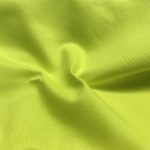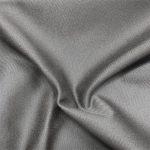What Are ESD (Anti-static) Fabrics?
ESD fabrics are textiles designed to dissipate static electricity. They do this by incorporating conductive fibers or by applying conductive coatings that allow static charges to dissipate safely into the atmosphere or the ground. These fabrics are used in situations where static electricity can damage electronic devices, cause fires or explosions, or interfere with sensitive operations.
Why Use ESD Fabrics?
The main reasons for using ESD fabrics are to protect electronic components, prevent fires and explosions, and improve efficiency and safety. Static electricity can damage electronic components, causing failures or reducing their lifespan. ESD fabrics prevent this by dissipating static charges. In environments where there are flammable or explosive materials, static discharges can cause fires or explosions, and ESD fabrics greatly reduce this risk. By reducing the likelihood of static discharge, ESD fabrics improve efficiency and safety, help maintain product integrity, and provide a safer working environment.

Composition of ESD Fabrics
ESD fabrics are typically made by blending standard fibers with conductive fibers or by applying conductive coatings. Common materials and their compositions include:
- Polyester (Polyethylene Terephthalate) Fabrics:
- Composition: 95% polyester, 5% conductive fibers.
- Characteristics: Lightweight, breathable, and effective in dissipating static charges.
- Cotton and Cotton/Polyester Blended Fabrics:
- Composition: 98% cotton, 2% conductive fibers.
- Characteristics: Comfortable, moisture-absorbent, and suitable for prolonged use.
- Nylon (Polyamide) Fabrics:
- Composition: 90% nylon, 10% conductive fibers.
- Characteristics: Durable, abrasion-resistant, and suitable for high-strength applications.
- Conductive Fiber Fabrics:
- Composition: 100% conductive fibers such as carbon or metal-coated fibers.
- Characteristics: High conductivity and superior ESD performance.
ESD Fabrics for Clothing Applications
Anti-static fabrics are used in a wide range of clothing applications where static electricity control is important. These fabrics help prevent the build-up and discharge of static electricity, protect sensitive electronic components, reduce the risk of fire or explosion in volatile environments, and improve overall safety and comfort. Here are some common types of clothing made from anti-static fabrics and their applications:
1. ESD (Electrostatic Discharge) Garments
Applications: Electronics manufacturing, assembly, and repair.
Description: ESD garments include lab coats, coveralls, jackets, and trousers designed for use in cleanrooms and other controlled environments where static-sensitive components are handled. These garments are made from fabrics that incorporate conductive fibers, which dissipate static charges effectively.
2. Cleanroom Apparel
Applications: Pharmaceuticals, biotechnology, semiconductor manufacturing, and other industries requiring stringent contamination control.
Description: Cleanroom apparel, such as coveralls, gowns, and hoods, are made from anti-static fabrics to minimize particle shedding and static discharge. These garments are often lightweight, breathable, and provide a barrier against contaminants while preventing static build-up.
3. Chemical and Hazardous Material Suits
Applications: Chemical processing, hazardous material handling, and emergency response.
Description: These suits protect workers from exposure to dangerous chemicals and materials. Anti-static properties are important to prevent static sparks that could ignite flammable substances. These suits often include additional features like chemical resistance and impermeability.
4. Flame-Resistant (FR) Clothing
Applications: Oil and gas industries, firefighting, and other environments with fire hazards.
Description: FR clothing with anti-static properties protects workers from both fire and static electricity. These garments are typically made from fabrics that combine flame-resistant and conductive fibers, providing dual protection against thermal and static hazards.
5. Industrial Workwear
Applications: General manufacturing, automotive, maintenance.
Description: Industrial workwear includes overalls, jackets, and pants made from anti-static fabrics. These garments help reduce the risk of static discharge in environments where workers are interacting with machinery and equipment. They are designed to keep industrial workers safe and comfortable.
6. Medical and Healthcare Uniforms
Applications: Hospitals, clinics, laboratories.
Description: Medical uniforms include scrubs, lab coats, and gowns. Anti-static properties can be beneficial in medical garments to reduce static build-up, which can attract dust and contaminants. This is particularly important in sterile environments and when handling sensitive medical equipment.
7. Protective Footwear and Gloves
Applications: Various industries where static control is important.
Description: Anti-static footwear and gloves are designed to provide a continuous path for static charges to be dissipated safely. They are often used in conjunction with other anti-static clothing to ensure comprehensive protection.

International Testing Standards
ESD fabrics are subject to a variety of international standards to ensure their effectiveness and safety. Key standards include:
- ANSI/ESD S20.20 (USA): This standard provides requirements for an ESD control program to protect electronic components from damage due to electrostatic discharge. It covers materials, personnel, and workstations.
- ASTM D257 (USA): This standard provides methods for measuring the DC resistance or conductance of insulating materials. This is important for assessing the performance of ESD fabrics.
- IEC 61340-5-1 (Europe): This standard provides general requirements for protecting electronic devices from electrostatic phenomena. It includes ESD fabrics, equipment, and personnel.
- EN 1149-1 (Europe): This standard provides the test method for measuring surface resistivity of protective clothing, including ESD fabrics.
- EN 1149-5 (Europe): This standard provides material performance and design requirements for protective clothing with electrostatic properties.
Conclusion
ESD fabrics are used in a wide range of protective clothing applications across many industries. Whether you’re in electronics manufacturing, cleanrooms, chemical processing, or any other environment where static control is important, these fabrics provide essential protection and safety. By choosing the right anti-static garments and making sure they meet the relevant standards, you can reduce the risks associated with static electricity.

 100% COTTON FABRIC
100% COTTON FABRIC COTTON STRETCH FABRIC
COTTON STRETCH FABRIC POLYESTER/COTTON FABRIC
POLYESTER/COTTON FABRIC OTHERS FABRIC
OTHERS FABRIC